Leg stretches are indispensable for seniors striving to preserve their physical independence and vitality.
As we age, flexibility diminishes, making everyday movements more challenging and increasing susceptibility to falls and injuries.
However, if we manage to incorporate targeted leg stretches into our daily routine, as seniors, we can counteract these effects, improving joint mobility, muscle flexibility, and overall stability.
These stretches help us with varying levels of mobility, ensuring accessibility for seniors of all abilities. Also, these stretches not only promote physical well-being but also contribute to overall quality of life.
Now, the point is what are the best leg stretches for seniors, right? I guess, you are reading this to learn about this fact. If yes, you are on the right track. Let’s dig deeper into the best ways for leg stretches in this short blog.
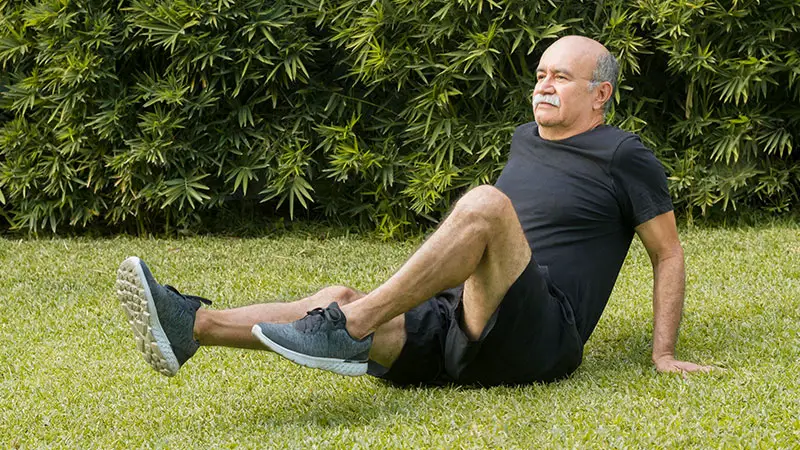
Why Leg Stretches Matters for Seniors?
No matter if it’s a physician or fitness expert, they must suggest you incorporate leg stretches into your daily routine.
For sure, leg stretches hold immense importance for seniors and there are many reasons behind it. Let’s learn about them first:
Help Maintain Flexibility
With age, muscles tend to lose elasticity, leading to decreased flexibility and range of motion.
Regular leg stretches help counteract this natural decline by promoting muscle elongation and flexibility. This way, it helps preserve mobility and prevent stiffness.
Improve Circulation
Regular leg stretches enhance blood flow to the lower extremities in a better way. It is particularly helpful for seniors who may be at higher risk of circulatory issues such as peripheral artery disease.
On the other hand, improved circulation is essential to provide nutrient and oxygen delivery to the muscles, which again helps in tissue repair and overall leg health.
Enhancing Balance and Stability
Strong and flexible leg muscles are essential for maintaining balance and stability. It usually reduces the risk of falls and related injuries. As you know, this is a very significant concern among seniors.
Leg stretches usually target key muscle groups involved in balance, like the hamstrings, quadriceps, and calf muscles. In this way, it promotes better postural control and reduces the likelihood of falls.
Alleviate Joint Pain
Many of you in your old age, experience joint pain, particularly in weight-bearing joints like the knees and hips. It happens because of conditions like osteoarthritis.
Gentle leg stretches can help alleviate joint pain and stiffness by improving joint mobility and lubrication. It also enhances comfort and facilitates daily activities.
As we see, leg stretches are very essential for seniors as they help maintain flexibility, improve circulation, enhance balance and stability, and alleviate joint pain.
Now, we’ll learn about the best leg stretches for seniors. Wait! There are some pre-stretching precautions you should check first.
Pre-Stretching Precautions for Seniors
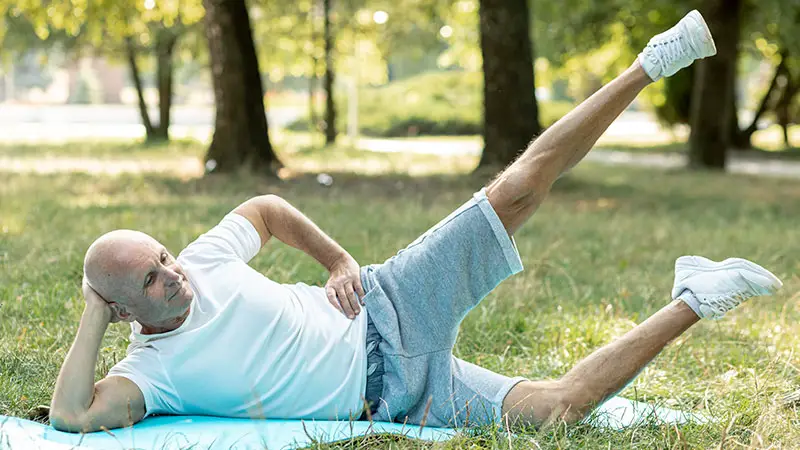
Pre-stretching precautions are undoubtedly very essential for seniors. It ensures safe and effective stretching routines. As we age, our bodies become more susceptible to injury, and that’s why it is essential to approach stretching with care.
Here are some precautions as a senior, you should consider before trying stretching exercises:
First, Consult with a Healthcare Professional
Before starting any stretching regimen, you should consult with your healthcare provider, especially if you have pre-existing medical conditions or concerns. The professional must provide personalized advice and guidance based on your health status and needs.
Don’t Forget the Warm-Up Activities
Prior to stretching, seniors should engage in light aerobic activities such as walking or cycling for 5-10 minutes. This helps increase blood flow to the muscles, preparing them for stretching and reducing the risk of injury.
Start Slowly and Progress Gradually
Seniors should begin with gentle, low-intensity stretches and gradually increase the intensity and duration over time. Avoid bouncing or jerking movements, as this can strain muscles and lead to injury.
Focus on Proper Technique
It’s essential to perform each stretch with proper technique to maximize effectiveness and minimize the risk of injury. Seniors should pay attention to body alignment, breathing, and avoiding overstretching.
Make Sure to Listen to Your Body
Seniors should pay attention to how their body responds during stretching exercises. If they experience pain or discomfort beyond mild tension, they should stop immediately and reassess their approach.
Modify and Adapt As Your Body Needs
As a senior, you should not hesitate to modify stretches to accommodate any physical limitations or discomfort. Using props such as chairs or straps can help support balance and stability during stretching exercises.
Stay Hydrated and Keep Your Water Bottle Closure
There is no way you can forget about being hydrated. Adequate hydration is essential for maintaining flexibility and preventing muscle cramps. Seniors should drink water before, during, and after stretching sessions to stay hydrated.
To safely incorporate stretching into your routine, these precautions are very essential without a doubt. These tricks simply promote flexibility, mobility, and overall well-being.
Once again, I would like to remind you to prioritize safety and listen to your body to ensure a positive and beneficial stretching experience.
Best Leg Stretches for Seniors
As you learn the benefits and precautions of the leg screeching, you must be eager to learn the best ways for it, right? Well, don’t worry, we are here to describe it properly for you.
Here, we outline seven highly effective leg stretches recommended specifically for seniors. These stretches specifically target different muscle groups and promote an improved range of motion and comfort.
1. Standing Quadriceps Stretch
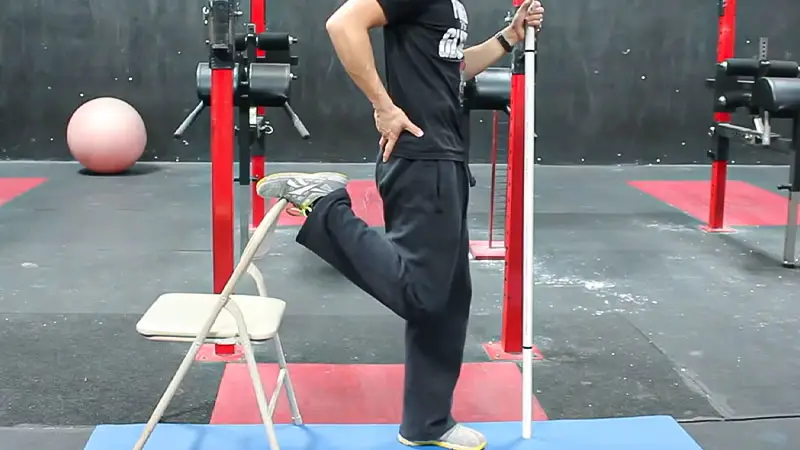
The quadriceps stretch is excellent for targeting the front thigh muscles, promoting flexibility in the hip and knee joints. Here is how you can try this stretch:
- Stand upright while holding onto a sturdy support for balance, such as a chair or wall.
- Gently bend one knee and bring your foot towards your bottom, grasping your ankle or foot with your hand.
- Make sure to keep your knees close together and your body upright.
- At the same time, hold this position for 10 to 30 seconds, feeling a gentle stretch in the front of your thigh.
- Repeat on the other leg.
This stretch helps to alleviate tightness in the quadriceps and improves mobility in activities like walking, climbing stairs, and standing up from a seated position. By maintaining flexibility in these muscles, you can also reduce the risk of knee and hip injuries.
2. Seated Knee to Chest Stretch
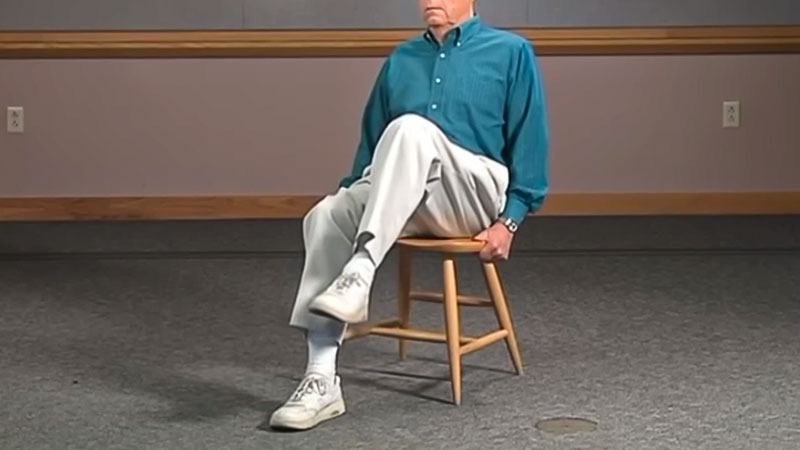
The knee-to-chest stretch usually targets the muscles in the hips and lower back. It simply promotes flexibility and relieves tension in these areas. To try this stretch, follow the below instructions:
- Sit on a firm surface with your legs extended in front of you.
- Bend one knee and bring it towards your chest, grasping your thigh, knee, or ankle with your hands.
- Lean forward slightly to deepen the stretch, feeling a gentle pull in the hip and lower back.
- Hold for 10 to 30 seconds, then switch to the other leg.
This stretch helps to improve flexibility and range of motion in the hips and lower back. It can be particularly beneficial for seniors who experience stiffness or discomfort in these areas.
3. Soleus Stretch
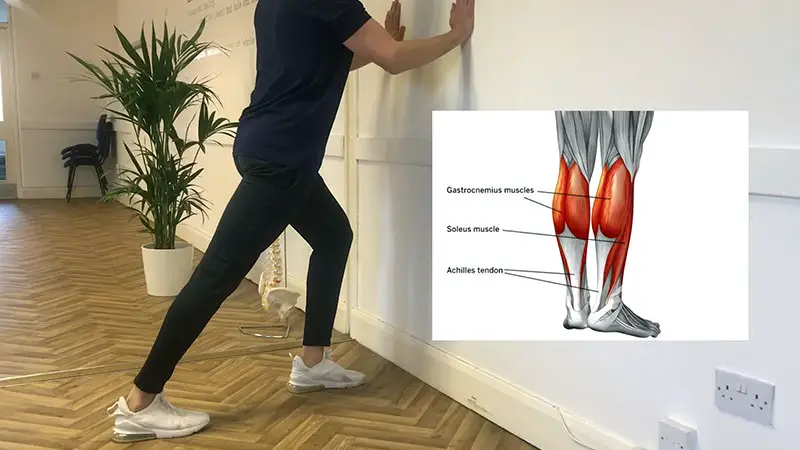
The soleus stretch focuses on the calf muscles, which can become tight and contribute to issues like foot pain and decreased mobility. This stretch is easy and here is how you should try it:
- Stand facing a wall with your hands resting against it for support.
- Take a step back with one foot and press your heel into the ground while keeping your knee straight.
- Bend your front knee and lean forward, keeping your back heel on the ground.
- Hold this position for 10 to 30 seconds, feeling a stretch in the calf of your back leg.
- Repeat on the other side.
Stretching the soleus muscle helps to maintain flexibility in the calf, which is essential for activities such as walking and climbing stairs.
It is essential to prevent tightness in the calf muscles so that you can reduce the risk of foot and ankle injuries and maintain better overall mobility.
4. Seated Ankle Stretch
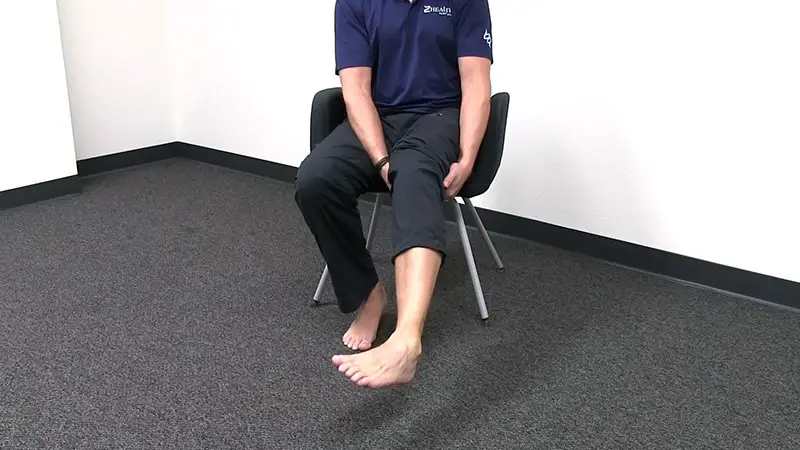
The seated ankle stretch generally focuses on the muscles in the front of the lower leg. Additionally, it improves flexibility and reduces stiffness. This is the technique:
- Sit comfortably on a chair with your feet flat on the floor.
- Lift one foot off the ground and gently pull your ankle towards your bottom, feeling a stretch in the front of your lower leg.
- Hold for 10 to 30 seconds, then switch to the other leg.
- Repeat the process.
This stretch helps to maintain flexibility in the ankle joint, which is important for activities like walking, standing, and maintaining balance. It also helps reduce the risk of stiffness and discomfort in the ankles and feet.
5. Standing Hamstring Stretch
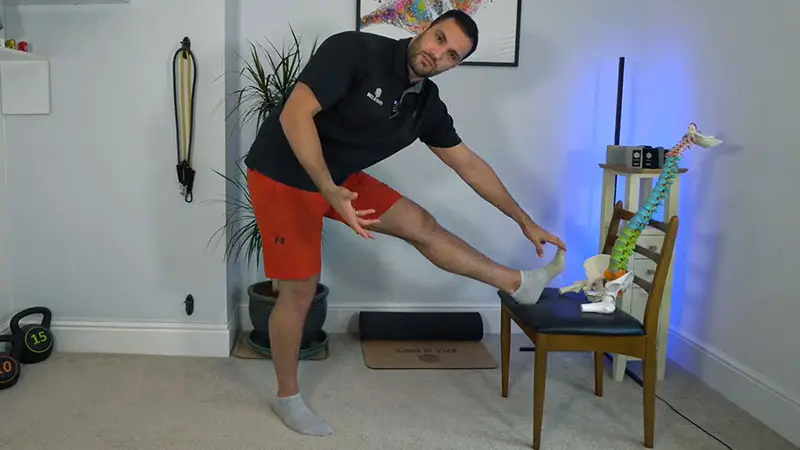
The hamstring stretch targets the muscles in the back of the thigh. It immensely promotes flexibility and reduces tightness in this area. This is the way to try this stretch:
- Stand upright with your feet hip-width apart.
- Extend one leg forward with your heel on the ground and toes pointing upwards.
- Bend your opposite knee slightly and hinge forward at the hips, reaching towards your extended leg.
- Keep your back straight and chest lifted, feeling a stretch in the back of your thigh.
- Hold for 10 to 30 seconds, then switch to the other leg.
Stretching the hamstrings helps to improve flexibility in the legs and lower back. It can also reduce the risk of strain and injury during activities such as bending, lifting, and walking.
6. Supine Knee to Chest Stretch

The supine knee-to-chest stretch is essential as it prioritizes healing the muscles in the hips and lower back. At the same time, it improves flexibility and area-based mobility like most other stretches. Here is how you should try it:
- Lie on your back with your legs extended and your arms by your sides.
- Bend one knee and bring it towards your chest, grasping your thigh or shin with both hands.
- Hold for 10 to 30 seconds, feeling a gentle stretch in the hip and lower back.
- Switch legs and repeat on the other side.
For sure, this stretch is very helpful. It helps to release tension in the hips and lower back, which can be particularly beneficial for seniors who experience stiffness or discomfort in these areas.
7. Cat-Cow Stretch
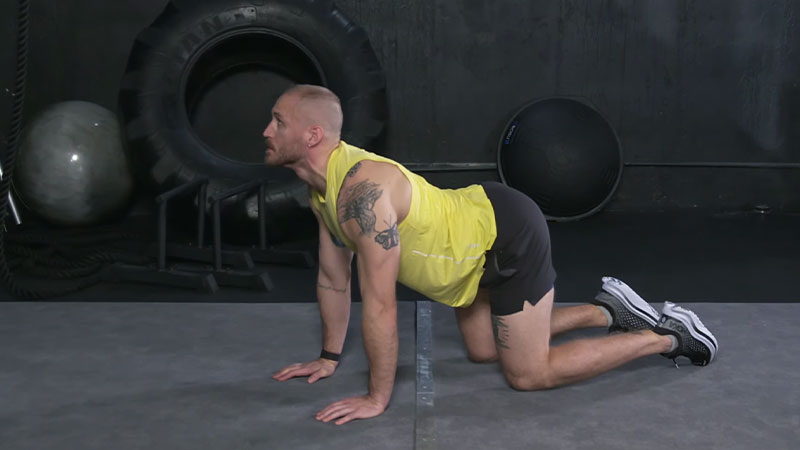
The cat-cow stretch is another helpful stretch that particularly targets the muscles in the spine and abdomen. It is also good at improving flexibility and mobility. Let’s learn how to try this stretch:
- Start on your hands and knees with your wrists directly under your shoulders and your knees directly under your hips.
- Inhale and arch your back, dropping your belly towards the floor and lifting your head and tailbone towards the ceiling (like a cow).
- Exhale and round your back, tucking your chin towards your chest and drawing your belly button towards your spine (like a cat).
- Continue alternating between these two positions for 10 to 30 seconds.
This stretch helps to improve mobility in the spine. Reducing stiffness and discomfort in the back and abdomen is another benefit of this stretch.
These leg stretches should be on your regular routine. They can help seniors improve joint mobility, reduce stiffness, and enhance overall leg flexibility. It’s important to perform these exercises regularly and listen to your body to avoid any discomfort or pain during stretching routines.
Wrapping Up
You have already learned about the seven most effective leg stretches for seniors. Remember that integrating these seven leg stretches into a regular routine can significantly benefit you by enhancing flexibility, mobility, and overall well-being.
They simply target key muscle groups and promote joint mobility. Also, they help reduce stiffness, alleviate discomfort, and mitigate the risk of injury.
No matter whether you try them independently or with guidance from a caregiver or fitness professional, these stretches offer accessible and effective ways for seniors to maintain independence and enjoy a higher quality of life as they age.
Hopefully, you have got my point. Thank you for your time.
I am a fitness instructor and I have been in the industry for 9 years. I have a passion for health and fitness.
I am a fitness instructor with over 9 years of experience in the industry. My passion is health and fitness and I would love to share my knowledge with you!